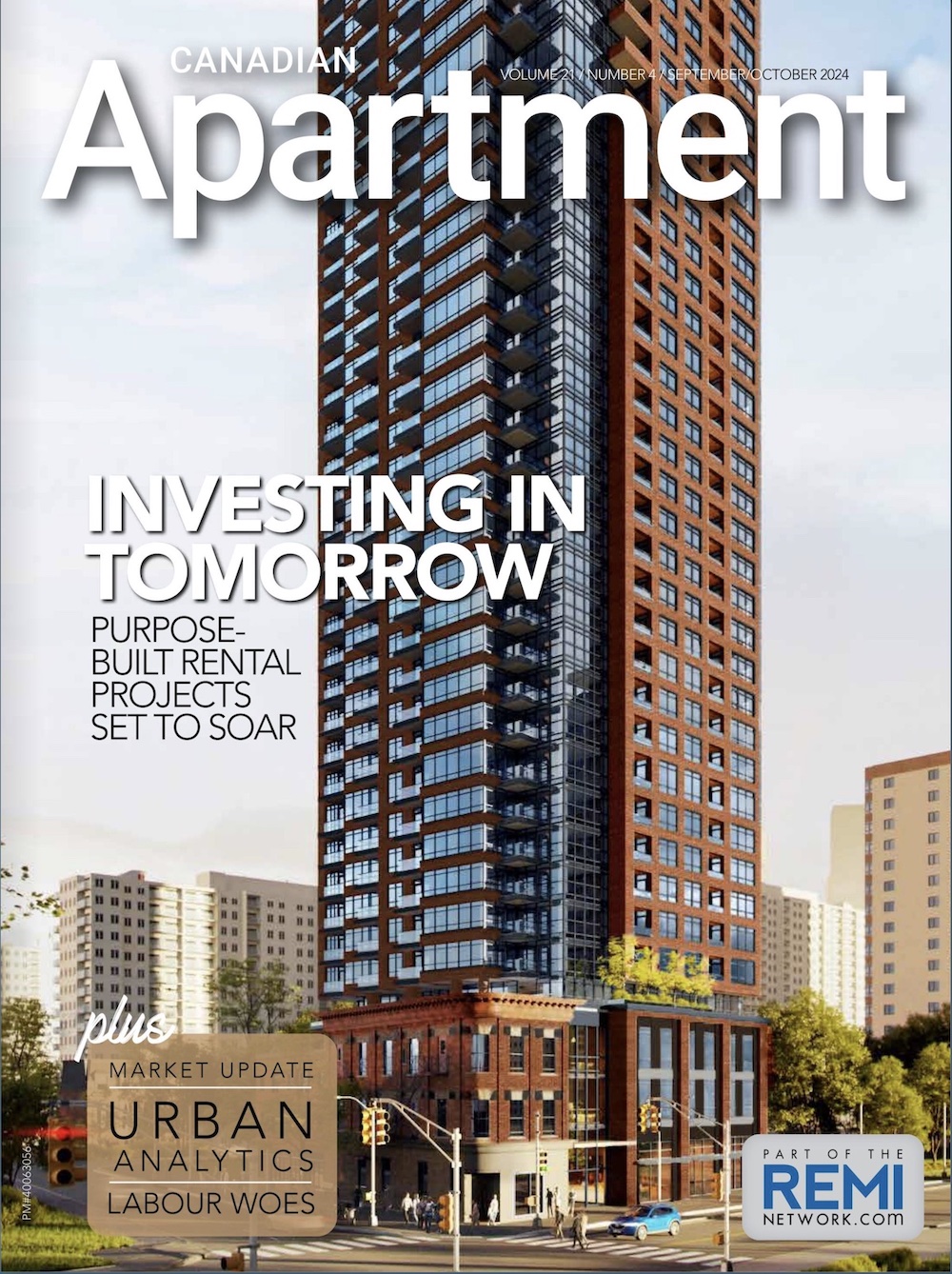Ontario’s new mask regulation now requires that masks or face coverings be worn in all building common areas where people are unable to maintain a physical distance of at least two metres.
Part of Ontario’s 364/20 Regulation under the Reopening Ontario (A Flexible Response to COVID-19) Act, the rule applies to any person entering a residential apartment and condominium with the exception of the following:
- Children under two years of age;
- Persons with an underlying medical condition which inhibits their ability to wear a mask or face covering;
- Persons who are unable to place or remove a mask or face covering without assistance;
- Employees and agents of the person responsible for the residential complex within an area designated for them and not for public access, where they can maintain a physical distance of at least two meters from any other person;
- Persons who are reasonably accommodated by not wearing a mask or face covering in accordance with the Accessibility for Ontarians with Disabilities Act; and
- Persons who are reasonably accommodated by not wearing a mask or face covering in accordance with the Ontario Human Rights Code.
“A person shall not be required to produce proof of a medical condition and/or qualification for any of the exemptions set out above,” explained Kristin A. Ley, Partner at Cohen Highley LLP Lawyers in an update on the new mask regulation. “Owners and property managers of apartment buildings and condominiums should ensure proper signage is posted at the entrances and in the common areas of such buildings advising of the mandatory mask requirements.”
According to Ley, failure to comply with any regulation under the Act can result in one of the following penalties:
(a) in the case of an individual, subject to clause (b), to a fine of not more than $100,000 and for a term of imprisonment of not more than one year;
(b) in the case of an individual who is a director or officer of a corporation, to a fine of not more than $500,000 and for a term of imprisonment of not more than one year; and
(c) in the case of a corporation, to a fine of not more than $10,000,000.
In addition, Ley explained that certain municipal jurisdictions such as Ottawa and Toronto have other restrictions in their by-laws regarding mask use in common areas of residential apartment buildings and condominiums. For example, in Toronto, there is mandatory language that must appear on signs that are posted in and around the property. Visit your municipal website for specific rules and regulations required to safely operate your building.







I have complained many times since 2020 when wearing masks and social distancing became mandatory. This week I continue to see tenants not wearing masks or practicing social distancing in common areas of our building, Eg: hallways, elevators, lobby and laundry facilities and I’m told Peel Living Head office tells me to call 311 on the tenants. This is not my job! I will be 73 years of age and am a cancer survivor and I have lived with chronic pain for many years. I want to know what can be done about tenants who won’t comply? I have lived at 31 Fair Oaks Place for going on 23 years now and feel very anxious about the situation!